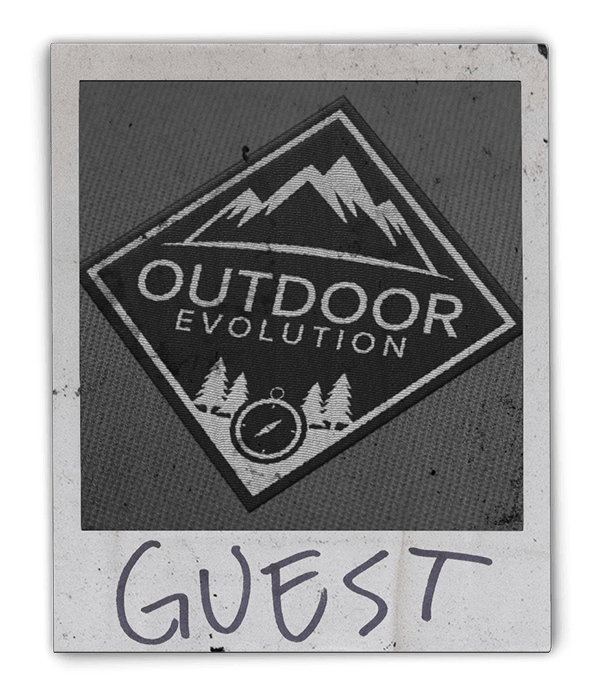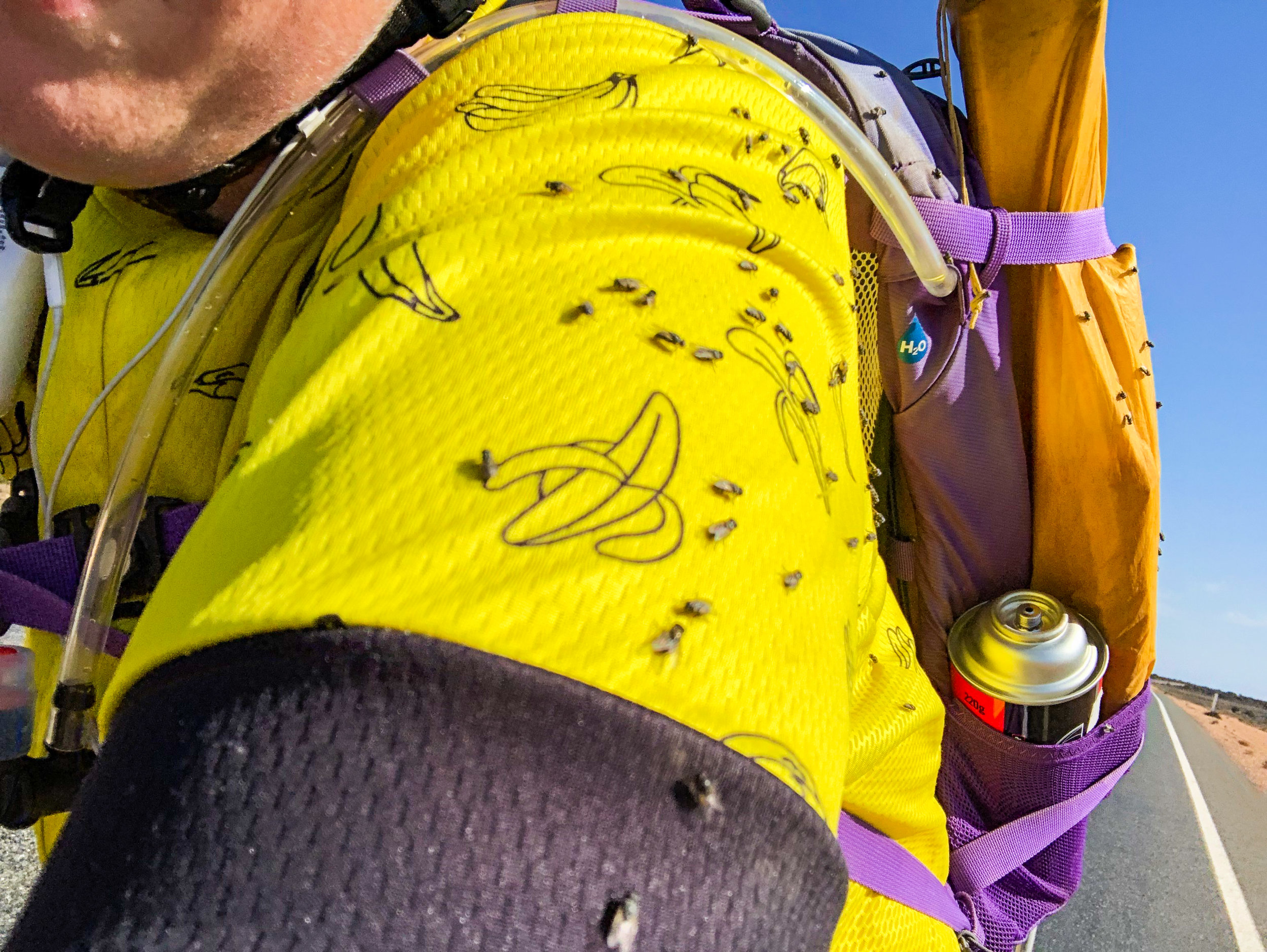Cycling the Australian Outback: The Good, The Bad, & The Ugly

In September 2019, I put my bike on a plane and flew the five hours across Australia to the city of Perth. There’s a bike race called the Indian Pacific Wheel Race, which starts in Perth and ends in Sydney. During my planning, I learned that biking in Australian cities is very different from biking in the outback. It would be a challenging course, as it intersects major highways, so I had to map out my route by using trail notes to avoid them the best I could.
After landing, I reassembled my bike at the airport and started riding. It was my first experience of a trip beginning so smoothly and suddenly. I was already cycling out of Perth within an hour after arriving to the city.
The path was uphill, very uphill.
Suddenly, feelings of unpreparedness and isolation started to sink in. I quickly learned that I am not the strongest of cyclists. I’m okay at bikes, but like most of my adventures, I decided to have a go with little research and mostly depend on my determination. After a few days, I settled into more of a routine - get up, pack up camp, and start riding.
I was finally getting into the swing, or cycle, of things.
The Good
After the early uphill struggles -both mentally and physically, I found the ride starting to become the right level of challenging. Once I left the cities, the scenery changed to plains and deserts. I was entering the Nullarbor Plain, which is mostly flat, almost treeless, with a very arid climate. It's located on the Great Australian Bight Coast with the Great Victoria Desert to the north.
On a side note, I was disappointed by the amount of rubbish I was witnessing. I think a lot of people in cars might be too removed from where they are driving. Frustrations aside, the temperatures began soaring in the afternoons, which made riding nearly impossible. Within the first few days, I had managed 300kms (186 mi), making me feel more confident in the desert.
That was misplaced confidence.
The Bad
Most cyclists in the desert carry around 8-10 liters of water. I had only 4 liters and soon realized I would need much more. I ended up with a 3 liter-bladder in my backpack with two smaller bottles and two plastic bottles in the cages on the bike's front fork. Even though I felt I had enough water, I still ran dry at times. Luckily, the rest of the gear held up amazingly as I continued to cycle the desert with podcasts and audiobooks to keep me company. I'd also pass the time by occasionally annoying Shingleback Lizards while they dozed in the sun.
It’s hard to stay positive when things go wrong, especially when it’s your bike that breaks down in the middle of the desert. It was indeed an exercise in resilience. I had a flat tire (no big deal), but when I used an Allen Key to remove the axel, I stripped the head. This meant I was stuck - unable to change the tire and still 25km (15.5 mi) from town with the sun fading.
I managed to get a hitch and a hand in fixing the bike (bush mechanic style with a hacksaw and a screwdriver), but my built-up confidence was shattered for the upcoming isolation I was soon to endure. There was a complete lack of services I knew I was about to head in to. I detoured into Kalgoorlie to visit the last bike store for 1500km (932 mi). After the bike service I was ready to go, now carrying four spare tubes, puncture repair kits, bike tools, and everything I thought I’d need for the rest of the trip.
The Ugly
There's no nice way to talk about this but… Butt Blisters. Ouch. I had heard the talk of saddle sores and figured I'd be okay - I was not. They started as blisters after a week and then turned to open wounds. I foolishly did not have jocks (undies) long enough to cover them at night. My sleeping bag would adhere to them too, causing the blisters to reopen every morning. This lead to a lot of interesting noises I made when getting onto the bike.
Let me say it again - ouch.
My body began breaking down, too, with coping with the pedaling every day. I had to stop clipping into my pedals when my knee started to complain. Flipping to the other side of the pedal would help keep the injuries at bay.
Knowing When to Call it Quits
The hardest issue was the mental battle, especially once the reception dropped out on my phone. Luckily there were payphones I could use to call my family and girlfriend occasionally. That kept me going for a while, but when I rode into the town of Ceduna in South Australia and heard there was an airport - I knew I was finished.
I started to miss the people at home.
The few days before, I had been dreading getting on the bike, and it felt like work. It was a hard conclusion to acknowledge, because I knew people were watching. I felt like I was failing a bit, but as soon as the decision was made, I knew it was the right call. Unsurprisingly, I didn't make the full distance across Australia.
I decided to call it quits after 19 days and 2000km (1243mi). Honestly, I was bored. It turns out cycling on the road wasn't what I thought it would be. It was like riding on a treadmill. I’m happy I had a go at it, but knowing when to throw in the towel is essential.
With all that being said, some highlights included: racing along with a dingo, waking to kangaroos near my tent, drinking orange juice I found on the road, and eating ice cream for breakfast whenever I could. One day, I had a spider bigger than my head on my tent! The worst was when I was covered in so many flies that I almost stopped noticing them crawling on me. Other animals I saw were wombats, camels, and emus. I cycled 200 km (125 mi) in one day, an achievement I never dreamed of (not on a fully loaded trail bike anyways) and met amazing people along the way, getting to see a part of my country in a unique way.
Gear Breakdown:
Bike:
2019 Kona Sutra (a touring bike that was slower than I was expecting but even with the dramas was brilliant)
Brooks Saddle - quite comfortable now; my blisters have healed.
Tent:
Big Agnes Tigerwall 2p - I cannot recommend this tent enough. The visibility without the fly is brilliant. For those considering a tarp in Australia - I did wake one night because there was a spider on the outside of the tent. It was blocking the moonlight enough to wake me up. It was bigger than a dinner plate! I'm so glad I had a fully enclosed space so that I felt safe going to sleep at night.
Sleeping bag:
Zpacks 20 Degrees. There were nights I had this bag cinched tight, and nights I didn't bother unpacking it. The desert is unpredictable. I love this sleeping bag. I'm sure there are better options out there, but this one is tried and true for me.
Bike Bags:
I used a few different options and I went for cost-effectiveness. I bought the Newboler brand at a fraction of the cost. I had no issues with them, but I don't know how they'd hold up in the long term.
The Best Item:
As usual, it was my P style. Being able to pee without having to find a tree to squat behind was priceless.
Luxury item:
Drone. It was terrific to get photos from a higher perspective to show just how far I'd come and just how vast the landscape is (although because it was such an expensive item for me, I was reluctant to use it at times).
Important Lessons I Learned:
Don't bother with bib shorts when you're too lazy to take your shirt off all the time.
Don't bother with your Bluetooth speaker. It interferes with the Bluetooth odometer and you won't be able to use it at all.
Biking isn't like hiking. You'll hit towns quicker, so having a stove isn't as valuable when there are no hot food options for four days.
There will be snakes, spiders, and strangers with trucks. There are other things to make you frightened, but ultimately you determine what your comfort zone is.






